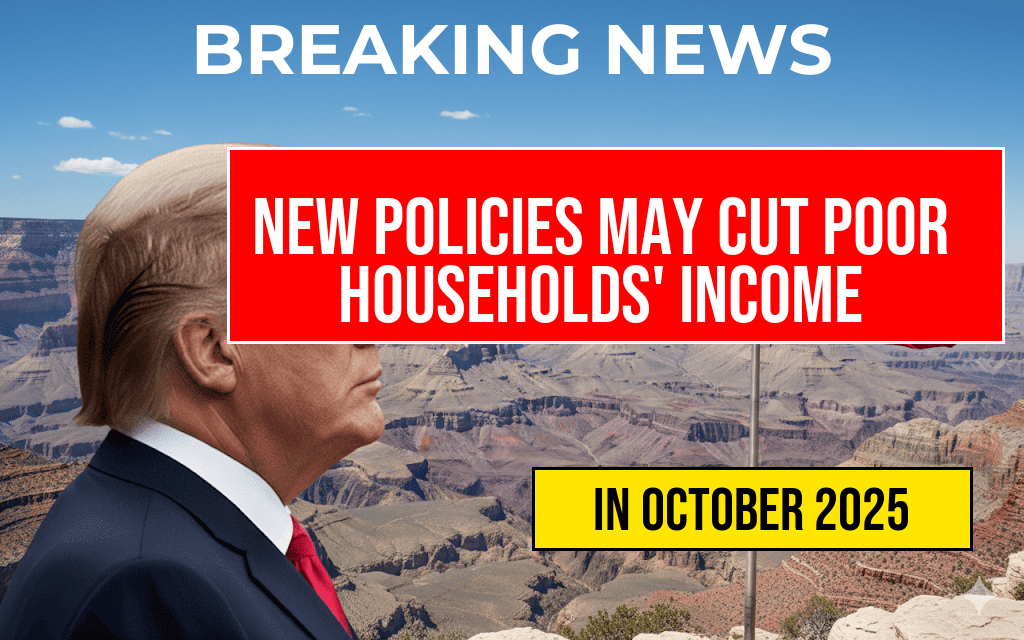Newly proposed policies are anticipated to significantly impact the financial landscape for the nation’s poorest households, with estimates suggesting an average annual income reduction of $1,650 per family. These changes come at a time when many low-income families are already struggling to make ends meet. The policies, which are part of broader economic reforms, aim to address budget deficits and reallocate resources but have raised concerns among social advocates and economists about their potential effects on vulnerable populations. With the cost of living rising and inflation affecting essential goods, the timing of these adjustments has sparked a heated debate regarding their necessity and implications.
Understanding the Proposed Policies
The proposed changes include adjustments to social welfare programs, tax credits, and eligibility requirements for various government assistance initiatives. These measures are designed to streamline government spending; however, critics argue that they disproportionately affect those already facing economic hardships.
- Reduction of SNAP Benefits: Adjustments to the Supplemental Nutrition Assistance Program (SNAP) could leave families with less support for purchasing food.
- Changes to Earned Income Tax Credit: Modifications to this tax credit may reduce the financial relief for working families, particularly those with multiple dependents.
- Welfare Eligibility Restrictions: New criteria for welfare eligibility could disqualify many low-income families from receiving essential assistance.
Economic Implications
Economists warn that these policies could have a ripple effect on local economies, particularly in low-income areas where spending is heavily reliant on government support. Reduced income for the poorest households may lead to decreased consumer spending, affecting local businesses and overall economic growth.
According to a report from the Forbes, small businesses in these communities often depend on the purchasing power of low-income families. If these households face a significant drop in income, local businesses may struggle to survive, leading to job losses and further economic decline.
Advocacy Groups Respond
Social advocacy groups have voiced strong opposition to the proposed policies, arguing that they exacerbate existing inequalities. Organizations such as the ACLU and the Center on Budget and Policy Priorities contend that these changes will disproportionately impact marginalized communities, making it even harder for them to achieve economic stability.
“This is a regressive step that will hurt families who are already on the brink,” stated Maria Gonzalez, a spokesperson for a national advocacy group. “Instead of addressing the root causes of poverty, these policies will only deepen the crisis.”
Public Reaction and Future Outlook
The public reaction to the proposed policies has been mixed, with some supporting the need for budgetary reform while others are concerned about the implications for low-income families. Town hall meetings and public forums are being organized across the country to discuss these changes and gather feedback from affected communities.
| Policy Change | Estimated Income Loss per Household |
|---|---|
| Reduction of SNAP Benefits | $600 |
| Changes to Earned Income Tax Credit | $800 |
| Welfare Eligibility Restrictions | $250 |
| Total Estimated Loss | $1,650 |
Conclusion
As the debate continues, policymakers are urged to consider the long-term effects of these changes on the nation’s poorest households. The potential income loss of $1,650 could have profound implications for family stability, local economies, and the overall health of the community. The coming months will be crucial in determining whether these policies will be implemented as proposed or revised to better support those in need.
Frequently Asked Questions
What are the new policies that are expected to affect the income of the poorest households?
The new policies include changes in tax regulations, welfare reforms, and adjustments to social security benefits, all aimed at reducing government spending.
How much are the poorest households expected to lose in income?
The poorest households are projected to see a decrease in their income by approximately $1,650 annually due to these new policies.
Who will be most impacted by these income reductions?
The most vulnerable populations, including low-income families, single parents, and individuals relying on government assistance, will face the greatest challenges from these income reductions.
What measures are being taken to support affected households?
While the new policies aim to reduce costs, there are discussions around implementing support measures such as job training programs and temporary financial aid to help the affected households.
How can individuals voice their concerns about these policies?
Individuals can express their concerns by contacting their local representatives, participating in community forums, or joining advocacy groups focused on supporting the poorest households impacted by these changes.

Leave a Reply